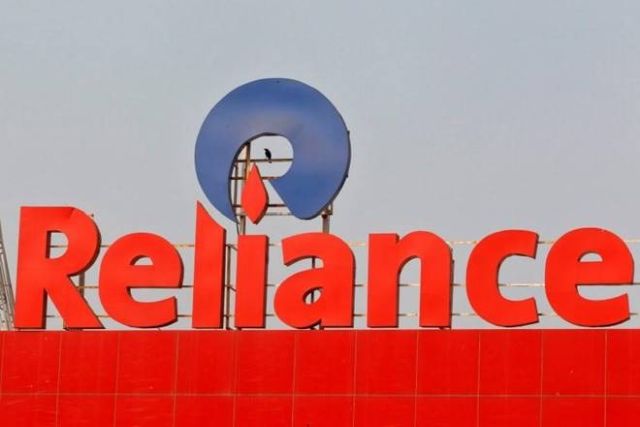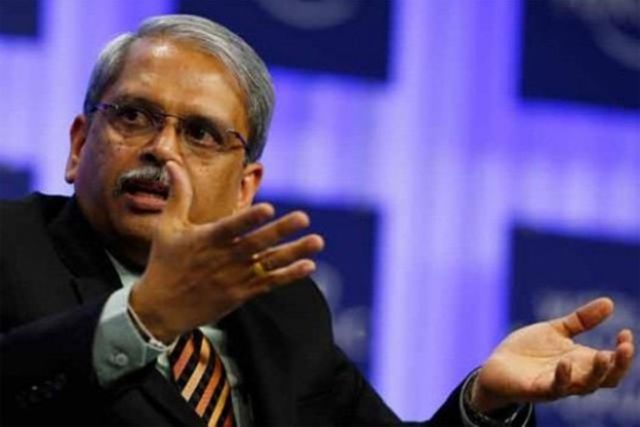
by Editor | May 25, 2021 | Business, Emerging Businesses, Investing
 New Delhi : Reliance Infratel, a subsidiary of Reliance Communications (RCOM), has informed the National Company Law Appellate Tribunal (NCLAT) on Tuesday that an amicable settlement has been arrived at with its minority investors holding 4.26 per cent equity in the company, and consent terms will be filed shortly.
New Delhi : Reliance Infratel, a subsidiary of Reliance Communications (RCOM), has informed the National Company Law Appellate Tribunal (NCLAT) on Tuesday that an amicable settlement has been arrived at with its minority investors holding 4.26 per cent equity in the company, and consent terms will be filed shortly.
In a regulatory filing, RCOM said: “The settlement with the minority investors paves the way for vacation of the stay granted by the NCLT on the sale of RITL’s tower and fibre assets, and will enable the company to proceed with asset monetisation of Rs 8,000 crore as soon as the company exits the debt resolution process under NCLT, for which its appeal, supported by all its lenders, is fixed for hearing today i.e. , that is, Tuesday, May 29, 2018 before the Hon’ble NCLAT.”
—IANS

by Editor | May 25, 2021 | Entrepreneurship, Opinions

Representational image
By Yash Mishra,
Protectionism has suddenly become the refuge of India’s internet entrepreneurs. Some of them, and their investors, cite the emergence of big (if not disruptive) internet companies from China to encourage the Indian government to go down that road. But as historian and political commentator Niall Fergusson, in his zealous pursuit of defending British imperialism, says, “Empire was the least original thing that British did as everywhere in Eurasia there were empires.”
In the present context of preferring Indian companies to overseas corporations, a legitimate question is: How, in an era of big multi-national corporations (MNCs) and capitalism, will India benefit by safeguarding and supporting a set of “Indian” companies?
If a so-called foreign or, for that matter, global company does not violate Indian regulations (competition laws included), hires Indians, pays taxes locally, and serves Indian consumers, there is absolutely no sound reason to block it from operating in the country. As microeconomics explains, consumer welfare is a component of overall social welfare and so, in this case, the government or regulatory agencies are at the risk of doing a disservice to the country by imposing restrictions on overseas firms or MNCs.
Delving too much into this “protectionism” debate is, however, nothing but a classic example of missing the forest for the trees. The real question that every stake-holder in India’s internet eco-system needs to answer is: Why have Indian start-ups failed to bring refreshingly new or imaginative and powerful consumer internet products or technologies to the global stage despite having access to (foreign) capital and a large domestic base of internet users?
The convenient “me-too” approach taken by Indian start-ups — and gladly funded by risk-averse venture capitalists — has not allowed these companies to find a place in the dynamic and ruthless global eco-system where only a few firms like Twitter, Google and Uber have been able to create barriers to entry for competition for an extended period of time. Had this not been the case, Indian companies, rather than desperately taking recourse to their Indian identity, would have relied on their imagination, intellectual-properties and well-nurtured company culture (aka company DNA) to take-on any consumer internet biggies across geographies.
To push an innovation into the mainstream is a complex and difficult, but doable, task. It is not about convenience, but will power. The ruthless internet eco-system has time and again displayed over the last 26 years that there will be no short-cut or easy path to success.
A point to note is that India-focused venture capitalists, in the process of funding successful or trending ideas of the West, have ended up accumulating a huge Karmic back-log. The losses of such venture capitalists, over the last 10 years, have reached the levels of Air India (last 10 years’ accumulated losses of around $10 billion), which is mocked and crucified almost on a daily basis by the media.
The remedy is simple, but surely not easy. Cultivation of ideas and the flow of venture capital have to re-orient. It is a task for both entrepreneurs and investors to ensure that time and money is spent on cultivating and nurturing unique and powerful ideas to leverage India’s “innovation in isolation” and transform these into a “force for creative global disruption”.
(Yash Mishra is the founder of VoxWeb Social Network. Views expressed are personal. He can be contacted at yash@voxweb.rocks)
—IANS

by Editor | May 25, 2021 | Investing, Markets, Opinions, Technology
 By Taponeel Mukherjee,
By Taponeel Mukherjee,
The “Global Energy & CO2 Status Report”, published by the International Energy Agency (IEA), states that “renewable energy saw the highest growth rate of all energy sources in 2017 and met around a quarter of global energy demand growth” — a significant statistic by any standard and one that clearly points to the fact that renewable energy is here to stay.
This has serious ramifications for fossil fuel-producing nations. While fossil fuels still contribute a large part of the global energy needs, the fact that a “structural shift” is in process is clear. It is clear that over a medium- to long-term horizon, fossil fuel-dependent nations will have to rethink their strategy to boost and manage their economies.
A quick look at the largest sovereign wealth funds (SWFs) in the world tells us that approximately 50 per cent of them are fossil fuel-based economies. Significant pools of capital are available with these SWFs and it should not be a surprise to see them diversify into various asset classes.
The next few decades may see fossil fuel-dependent countries go from being providers of energy and capital to focusing significantly more on being a source of capital, i.e., an investor. This switch towards investing is a visible trend, with SWFs being a source of significant capital across asset classes such as equity, private equity and infrastructure. The key takeaway is that SWFs, especially those from fossil fuel-producing countries, can be significant financiers of infrastructure.
Infrastructure as an asset class has two elements that make it attractive for SWFs: Fixed cash-flow profile and large market. Infrastructure assets, by their very nature, are highly regulated assets with fixed income type of cash flows. Such a structure works well for SWFs that are looking to match liabilities, i.e., cash outflows, on their balance sheets. In addition, infrastructure needs that countries face are large enough markets for SWFs to invest into in meaningful size to generate returns.
The large fossil fuel-driven SWFs are of significant size. Estimates by the Sovereign Wealth Funds Institute say the top 10 SWFs globally are managing more than $200 billion each, and four of these are fossil fuel-driven. Therefore, given the long-dated investment horizon of the SWFs, the nature of liabilities on their balance sheets, and the large size of capital that needs to be deployed, infrastructure as a broad sector is attractive.
For fossil fuel-producing countries, switching from being an energy supplier to a supplier of capital lets them reduce their exposure to fossil fuel price volatility in the short term and play a larger role in boosting trade ties with other nations through infrastructure creation in the long run.
For nations that need financing for infrastructure creation, the global shift towards renewables and its consequent impact on fossil fuel-producing countries to turn investors is an opportunity not to be missed.
There are also important lessons to be learnt by both investors and infrastructure destination nations from the Norwegian government’s decision against allowing unlisted infrastructure investments by its Sovereign Wealth Fund. The reason given was that the fund wasn’t equipped to deal with the risks involved, especially from a political and regulatory perspective.
This points towards the urgent need for infrastructure destination nations to, one, improve regulations around unlisted infrastructure assets and, two, create mechanisms that allow for listed infrastructure assets to grow.
The issues faced by the Norwegian Sovereign Fund are generic issues that all SWFs face. It is important that in a highly competitive global capital market, countries expedite the creation of an enabling environment for infrastructure creation.
Clearly, the global changes in the energy markets also have significant ramifications on the financial markets.
The energy transition from a world dependent on fossil fuels to one driven by renewables does not necessarily need to have winners and losers. In a global economy besieged by the fear of “trade wars”, switching roles for fossil fuel-producing nations from major energy suppliers to large providers of capital is worth considering.
(Taponeel Mukherjee Development Tracks, an infrastructure advisory firm. Views expressed are personal. He can be contacted at taponeel.mukherjee@development-tracks.com or @Taponeel on Twitter)
—IANS

by Editor | May 25, 2021 | Corporate, Corporate Buzz, Entrepreneurship, Investing, Startup Basics

Infosys co-founder Kris Gopalakrishnan
Gandhinagar : Unlike in developed countries, start ups in India do not grow due to lack of enthusiasm from angel investors, Infosys co-founder Kris Gopalakrishnan said here on Saturday.
“In countries like the US, there are almost five angel investors per start up. In India, however, there is hardly one angel investor for five start ups. I am hopeful this will change.”
Also, the current turmoil in the banking system will not affect the start ups, Gopalakrishnan told the media on the sidelines of two-day Empresario StartUp Summit 2018, an annual event by the Entrepreneurship Development Institute of India.
“As far as community investing is concerned, India is good. But community investing is not in the form of equity investments, but more like debt. We need more equity investments from communities for the start ups in the country to grow.”
Gopalakrishnan said he believes India FinTech start ups are one of the best in the world, adding that the country needed a robust ecosystem for the start ups to be successful.
—IANS

by Editor | May 25, 2021 | Economy, Markets, News
 Mumbai : Bargain hunting by investors lifted the key Indian equity indices on Wednesday — a day ahead of futures and options (F&O) expiry, snapping a three-day losing streak.
Mumbai : Bargain hunting by investors lifted the key Indian equity indices on Wednesday — a day ahead of futures and options (F&O) expiry, snapping a three-day losing streak.
According to market observers, healthy buying in IT, Teck (technology, media and entertainment) and banking stocks added to the upward trajectory of the benchmark indices.
The wider Nifty50 of the National Stock Exchange (NSE) rose by 37.05 points or 0.36 per cent to close at 10,397.45 points.
The barometer 30-scrip Sensitive Index (Sensex) of the BSE closed at 33,844.86 points — up 141.27 points or 0.42 per cent — from its previous session’s close.
However, the BSE market breadth was bearish with 1,624 declines and 1,112 advances.
“Markets bounced back on Wednesday to end with gains after three sessions of losses. The gains came on the back of bargain hunting by investors post 1.30 p.m.,” Deepak Jasani, Head – Retail Research, HDFC Securities, told IANS.
“IT stocks gained after Nasscom (National Association of Software and Services Companies) gave a cautiously optimistic outlook for the Indian IT sector,” Jasani added.
Nasscom on Tuesday said it expects India’s IT exports to grow at 7-9 per cent to $135-$137 billion in 2018-19, projecting exports during the current financial year to be $126 billion — a growth of 7.8 per cent over the previous year.
The apex IT industry body said the domestic revenues, excluding hardware, is expected to grow by 10-12 per cent at $28-29 billion in the next financial year against $26 billion likely in FY2018.
On Wednesday, the Indian rupee strengthened by three paise to close at 64.76 against the US dollar from its previous close at 64.79.
In terms of investments, provisional data with the exchanges showed that foreign institutional investors sold scrips worth Rs 1,214.18 crore, while domestic institutional investors purchased stocks worth Rs 1,375.48 crore.
Vinod Nair, Head of Research, Geojit Financial Services, said: “After a consecutive down trend, today (Wednesday) the market managed to close on a positive note due to the outperformance of IT index and rebound in PSU banks.”
Sectorwise, the S&P BSE IT index surged by 265.73 points, followed by Teck index by 117.15 points and banking index by 81.33 points.
On the other hand, the S&P BSE metal index slipped by 191.85 points, healthcare index by 168.40 points and consumer durables index by 121.85 points.
Major Sensex gainers on Wednesday were: Tata Consultancy Services, up 3.33 per cent at Rs 3,043.05; ITC, up 2 per cent at Rs 268.05; ONGC, up 1.66 per cent at Rs 190.10; State Bank of India, up 1.28 per cent at Rs 273.10; and Infosys, up 1.23 per cent at Rs 1,148.70.
Major Sensex losers were: Sun Pharma, down 6.19 per cent at Rs 524.75; IndusInd Bank, down 2.01 per cent at Rs 1,595.30; Tata Steel, down 1.57 per cent at Rs 640.55; Bajaj Auto, down 1.36 per cent at Rs 3,008.25; and Tata Motors, down 1.23 per cent at Rs 364.35.
—IANS

 New Delhi : Reliance Infratel, a subsidiary of Reliance Communications (RCOM), has informed the National Company Law Appellate Tribunal (NCLAT) on Tuesday that an amicable settlement has been arrived at with its minority investors holding 4.26 per cent equity in the company, and consent terms will be filed shortly.
New Delhi : Reliance Infratel, a subsidiary of Reliance Communications (RCOM), has informed the National Company Law Appellate Tribunal (NCLAT) on Tuesday that an amicable settlement has been arrived at with its minority investors holding 4.26 per cent equity in the company, and consent terms will be filed shortly.



